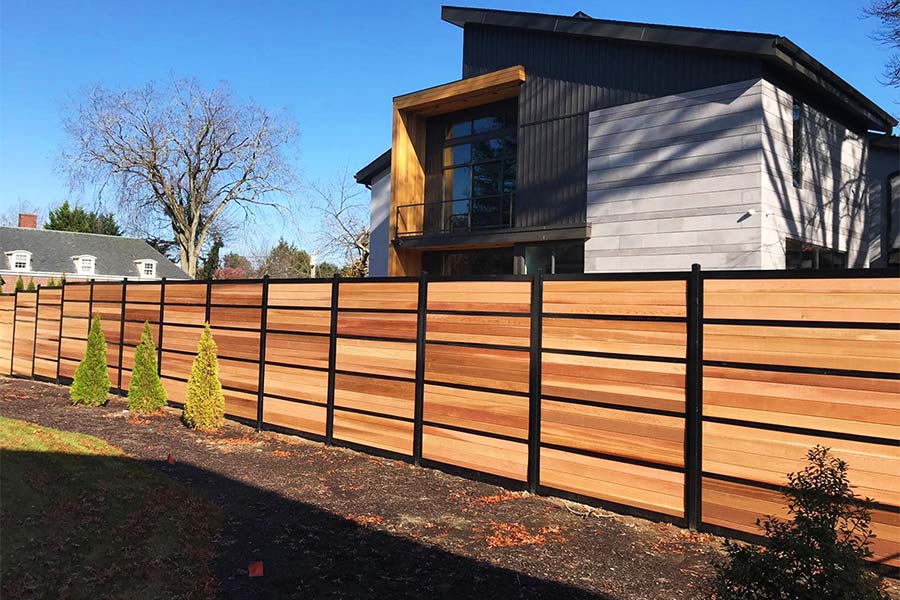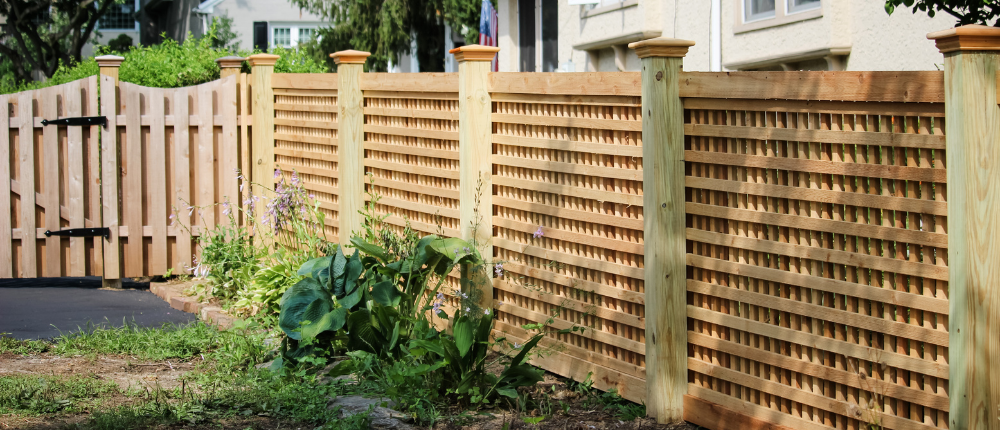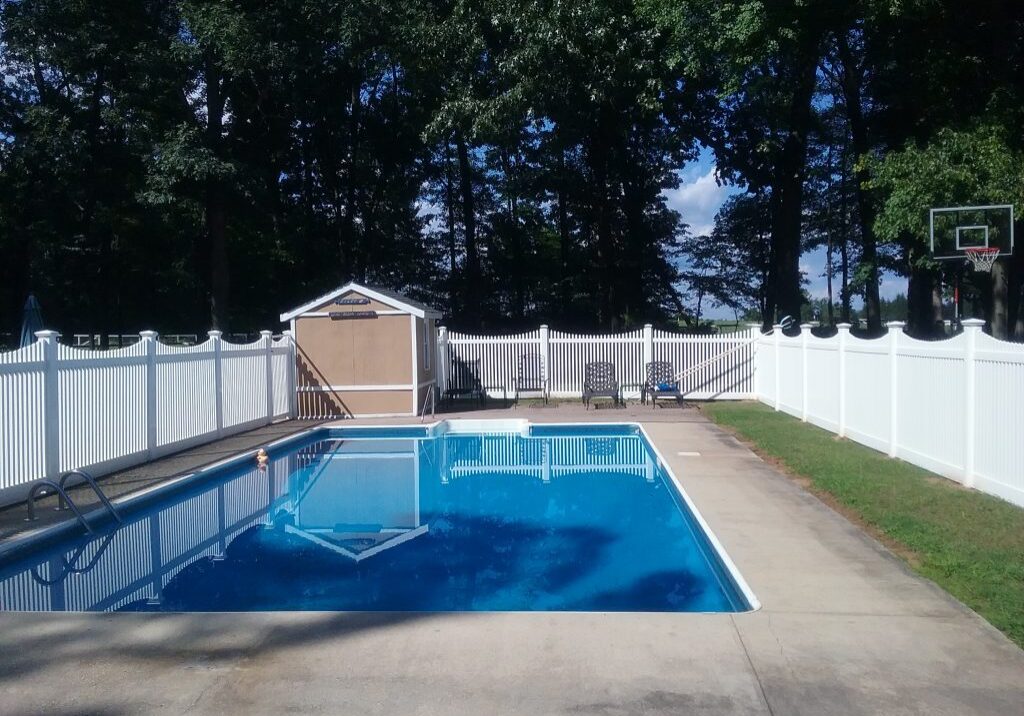All Categories
Featured

As sustainability ends up being an expanding concern for homeowners and businesses, the demand for environment-friendly structure products encompasses outside spaces, including fences. Typical fence products such as metal, wood, and vinyl can have substantial environmental influences, from deforestation to chemical treatments and plastic waste. Nonetheless, there are several eco-friendly secure fencing options offered that not only decrease the carbon footprint however likewise supply sturdiness and aesthetic allure. Allow's explore some of one of the most sustainable and preferred fence materials that can assist you go eco-friendly while still boosting your residential property's style, safety, and personal privacy.
- Bamboo Fence. Bamboo is just one of the most lasting materials on the marketplace, and it is progressively made use of in fencing construction due to its fast development and strength. Unlike hardwood trees, bamboo is a turf that can expand back fully within simply a couple of years, making it very eco-friendly. It's normally immune to insects and rot, which means it does not need extreme chemicals or therapies, making it an environment-friendly option.

Conveniences: Bamboo fencings are sturdy, low-maintenance, and eco-friendly. They are normally resistant to termites and moisture, reducing the demand for chemical preservatives. Additionally, bamboo helps in reducing dirt disintegration due to its deep root systems. Factors to consider: Bamboo can be more expensive than some typical wood secure fencing choices, and it may not appropriate for areas with severe cold or freezing temperature levels, as it can become weak in time. 2. Recycled Materials Fence. Secure fencing made from recycled materials is a great means to promote sustainability. Numerous makers currently use fencings made from post-consumer plastic, recycled timber, or perhaps repurposed metal. By choosing fence made from recycled products, you reduce the need for new resources and aid stop waste from finishing up in garbage dumps. Lots of composite materials, for example, are made from recycled plastic bottles, timber scraps, and other products that would certainly or else be discarded.
Conveniences: Recycled material fences aid conserve natural deposits, lower contamination, and reduced the ecological impact of the manufacturing process. They can also use impressive longevity, standing up to decay, mold, and termites. Factors to consider: While recycled material fences are environmentally friendly and very resilient, they might not have the exact same natural visual that some home owners look for. Nonetheless, manufacturers now supply layouts that simulate the look of timber or stone. 3. Composite Fencing. Compound fence is made from a blend of timber fibers and plastic, commonly including recycled materials. This combination produces a highly durable, low-maintenance fencing that does not need routine paint or staining, making it a lasting alternative. Compound fences are resistant to rot, bugs, and weathering, which indicates they can last for years without the requirement for frequent substitutes.

Perks: Composite fences are lasting and can withstand severe weather, decreasing the demand for substitutes or repairs. Given that composite materials frequently include recycled web content, they help in reducing plastic waste. In addition, they do not require dangerous chemicals or therapies. Factors to consider: Compound fences can have a greater in advance price than standard wood or plastic, though their resilience and lowered maintenance prices commonly make them a much more economical option in the long run. 4. Living Fences. Living fencings, also called hedges, are a green and aesthetically pleasing alternative that entails growing thick hedges, trees, or climbing plants along your property line to produce an all-natural barrier. Popular plants for living fences consist of boxwood, privet, and holly. These plants can be expanded to supply personal privacy, windbreaks, and noise decrease while contributing to environmental health and wellness.
Perks: Living fences promote biodiversity, enhance air top quality, and soak up carbon dioxide, making them one of the most green fencing alternatives. They also supply a natural habitat for pests and birds and can minimize noise contamination and assist regulate temperature levels in your lawn. Considerations: Living fencings require regular maintenance, such as trimming, watering, and often pest control. They additionally take some time to develop and may not supply immediate privacy contrasted to solid wood or vinyl fencings. 5. Cedar and Redwood Secure Fencing. Cedar and redwood are popular natural wood options for fences. These materials are naturally resistant and durable to rot, insects, and wetness, which indicates they usually don't require the usage of damaging chemical therapies. When sourced from sustainably managed forests, cedar and redwood fencings can be an ecologically friendly selection that gives both appeal and durability.
Perks: These woods are eco-friendly, eco-friendly, and deal excellent sturdiness and natural elegance. Cedar and redwood likewise have a reduced ecological effect when harvested sensibly, making them a green selection for many home owners. Considerations: While cedar and redwood fencings have ecological benefits, they do still require periodic maintenance and are much more pricey than various other wood choices. It is necessary to guarantee that the wood is sourced from sustainable woodlands to optimize its environmental benefits. 6. Stone and Block Secure Fencing (Redeemed) Stone and block fencings are low-maintenance and exceptionally long lasting, and they can be environmentally friendly when made from redeemed materials. Recovered stone and brick are typically recovered from old structures or building projects, lowering waste and saving natural sources. These products supply a classic appearance and are highly resistant to weathering, making them a lasting option for secure fencing.
Advantages: Reclaimed rock and brick are long lasting, cosmetically pleasing, and require very little maintenance. By repurposing these products, you help in reducing the need for brand-new sources and lower waste in land fills. Factors to consider: The setup of stone and block fencings can be labor-intensive and much more costly compared to various other products, however their durability and reduced maintenance needs can make them economical in the long run. Verdict. Green fence options are not only helpful for the setting but also use toughness, low upkeep, and aesthetic allure. Whether you opt for bamboo, recycled materials, composite secure fencing, living fences, or lasting wood like cedar and redwood, there are numerous methods to lower your ecological footprint while enhancing your residential or commercial property's appearance. By picking these eco-conscious materials, you can add to a much healthier world and create an outside room that mirrors your values.
Latest Posts
Contact Us: Reach Out for Trusted Auto Repair & Service in Montclare
Published Apr 20, 25
2 min read
Montclare Auto Repair: A Reliable Auto Service Provider in Montclare
Published Apr 20, 25
2 min read
Boost Your Building with Automatic Gates from Washington Fence
Published Apr 19, 25
2 min read
More
Latest Posts
Contact Us: Reach Out for Trusted Auto Repair & Service in Montclare
Published Apr 20, 25
2 min read
Montclare Auto Repair: A Reliable Auto Service Provider in Montclare
Published Apr 20, 25
2 min read
Boost Your Building with Automatic Gates from Washington Fence
Published Apr 19, 25
2 min read